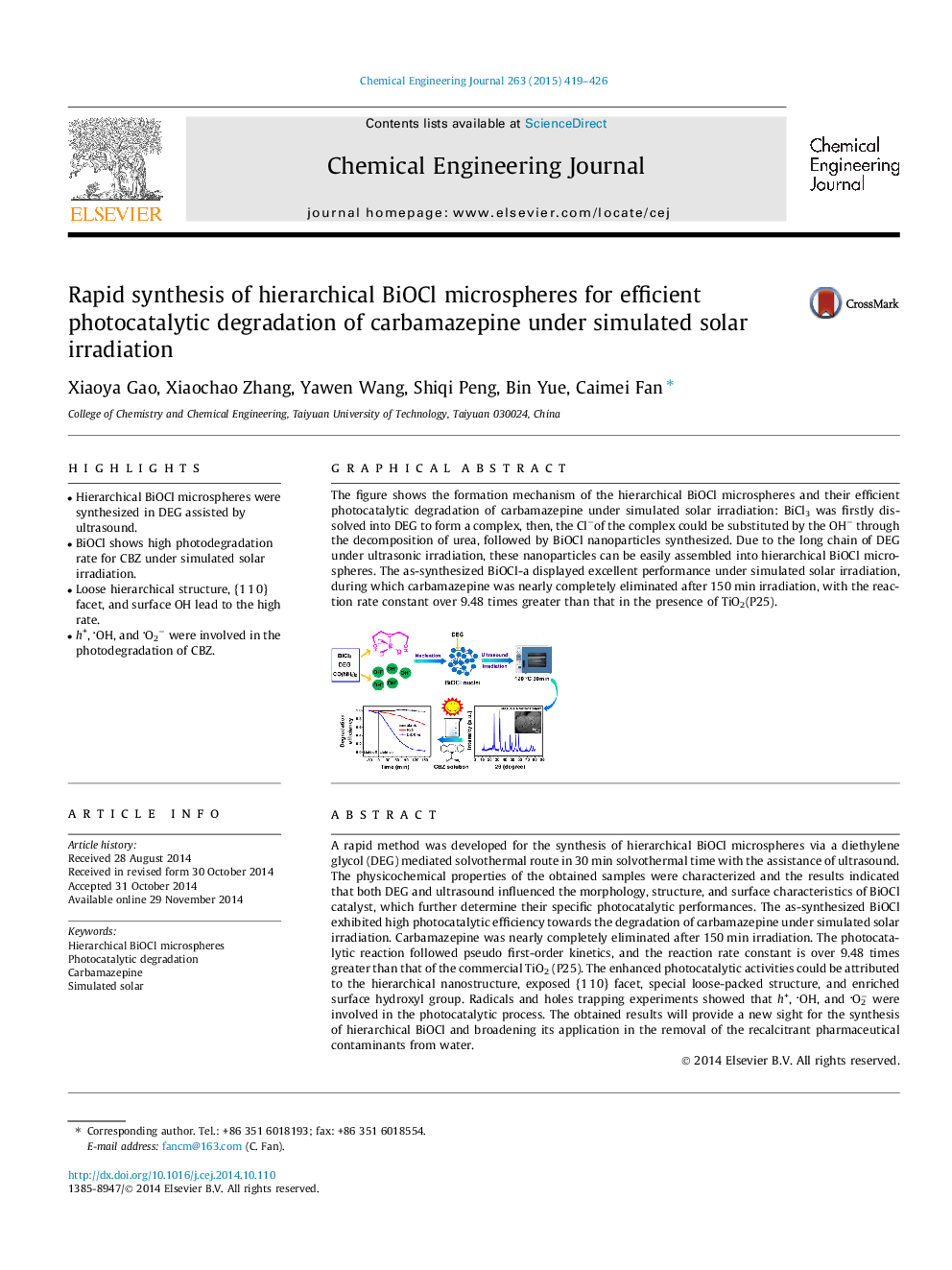| کد مقاله | کد نشریه | سال انتشار | مقاله انگلیسی | نسخه تمام متن |
|---|---|---|---|---|
| 146692 | 456376 | 2015 | 8 صفحه PDF | دانلود رایگان |

• Hierarchical BiOCl microspheres were synthesized in DEG assisted by ultrasound.
• BiOCl shows high photodegradation rate for CBZ under simulated solar irradiation.
• Loose hierarchical structure, {1 1 0} facet, and surface OH lead to the high rate.
• h+, OH, and O2− were involved in the photodegradation of CBZ.
A rapid method was developed for the synthesis of hierarchical BiOCl microspheres via a diethylene glycol (DEG) mediated solvothermal route in 30 min solvothermal time with the assistance of ultrasound. The physicochemical properties of the obtained samples were characterized and the results indicated that both DEG and ultrasound influenced the morphology, structure, and surface characteristics of BiOCl catalyst, which further determine their specific photocatalytic performances. The as-synthesized BiOCl exhibited high photocatalytic efficiency towards the degradation of carbamazepine under simulated solar irradiation. Carbamazepine was nearly completely eliminated after 150 min irradiation. The photocatalytic reaction followed pseudo first-order kinetics, and the reaction rate constant is over 9.48 times greater than that of the commercial TiO2 (P25). The enhanced photocatalytic activities could be attributed to the hierarchical nanostructure, exposed {1 1 0} facet, special loose-packed structure, and enriched surface hydroxyl group. Radicals and holes trapping experiments showed that h+, OH, and O2− were involved in the photocatalytic process. The obtained results will provide a new sight for the synthesis of hierarchical BiOCl and broadening its application in the removal of the recalcitrant pharmaceutical contaminants from water.
The figure shows the formation mechanism of the hierarchical BiOCl microspheres and their efficient photocatalytic degradation of carbamazepine under simulated solar irradiation: BiCl3 was firstly dissolved into DEG to form a complex, then, the Cl−of the complex could be substituted by the OH− through the decomposition of urea, followed by BiOCl nanoparticles synthesized. Due to the long chain of DEG under ultrasonic irradiation, these nanoparticles can be easily assembled into hierarchical BiOCl microspheres. The as-synthesized BiOCl-a displayed excellent performance under simulated solar irradiation, during which carbamazepine was nearly completely eliminated after 150 min irradiation, with the reaction rate constant over 9.48 times greater than that in the presence of TiO2(P25).Figure optionsDownload as PowerPoint slide
Journal: Chemical Engineering Journal - Volume 263, 1 March 2015, Pages 419–426